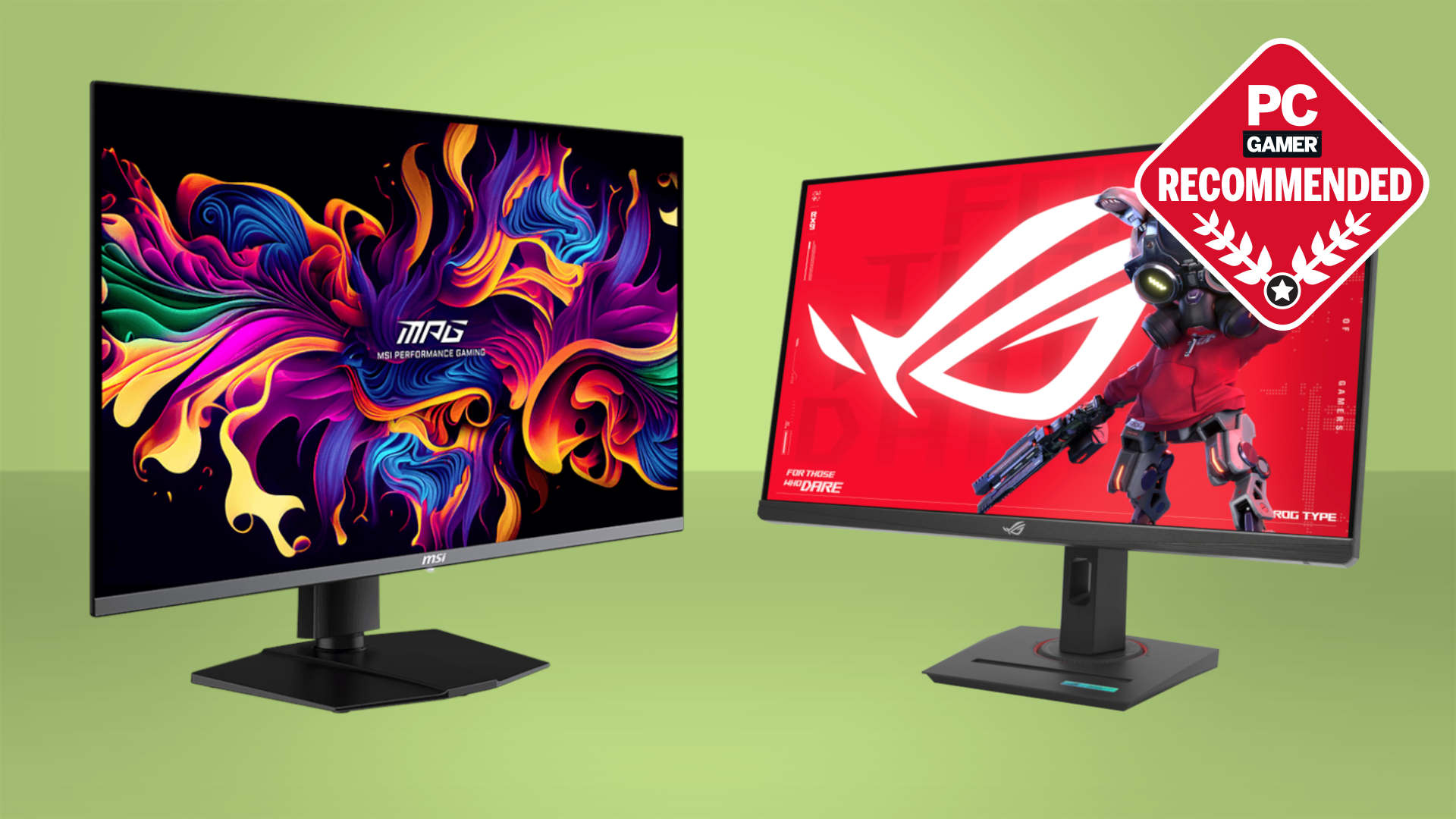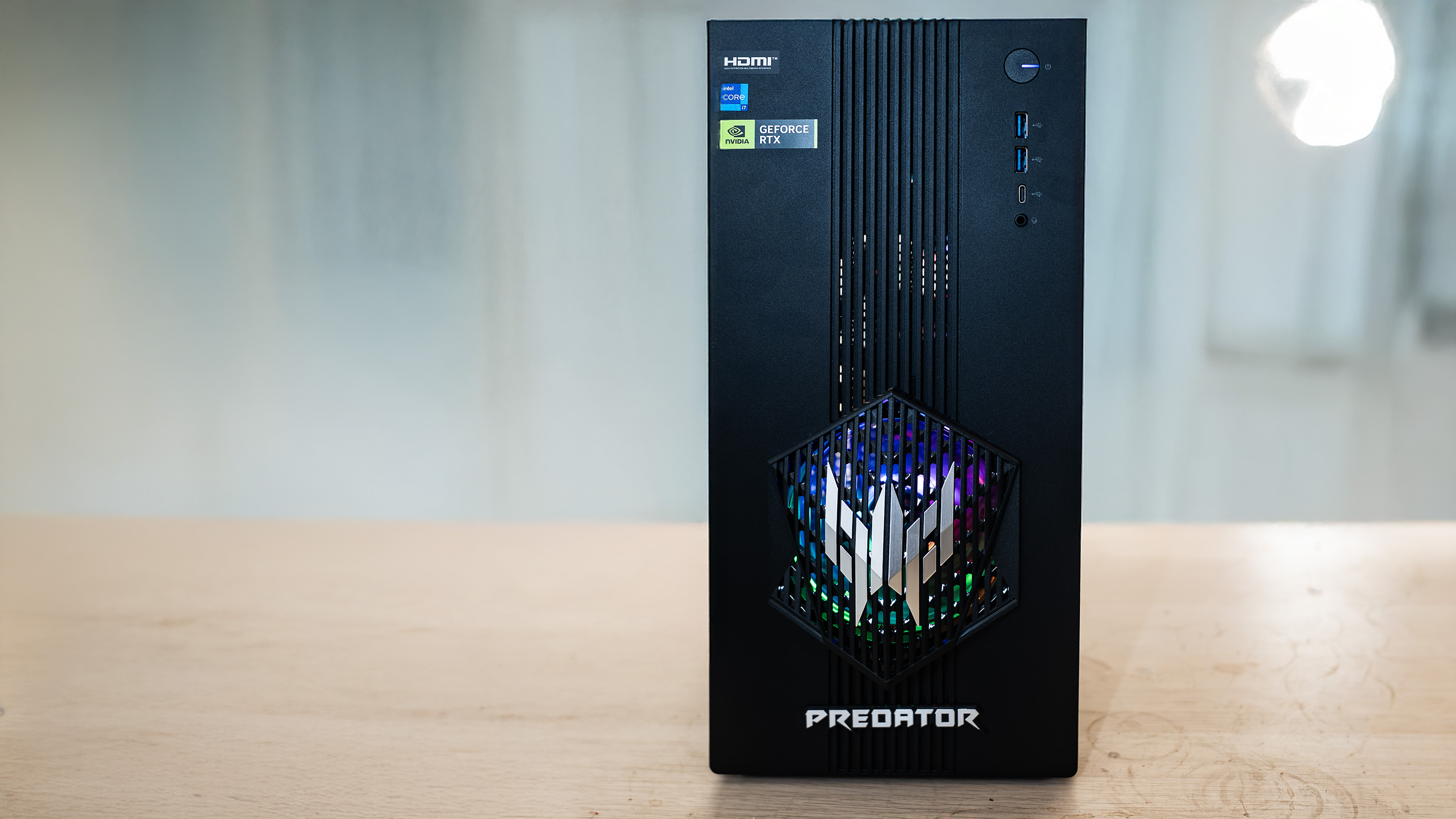I built a brand new gaming PC from the ground up with Corsair's iCUE Link: a simplified, smart and just a little frustrating all-in-one system
iCUE Link makes things easier, but don't ignore the small details.
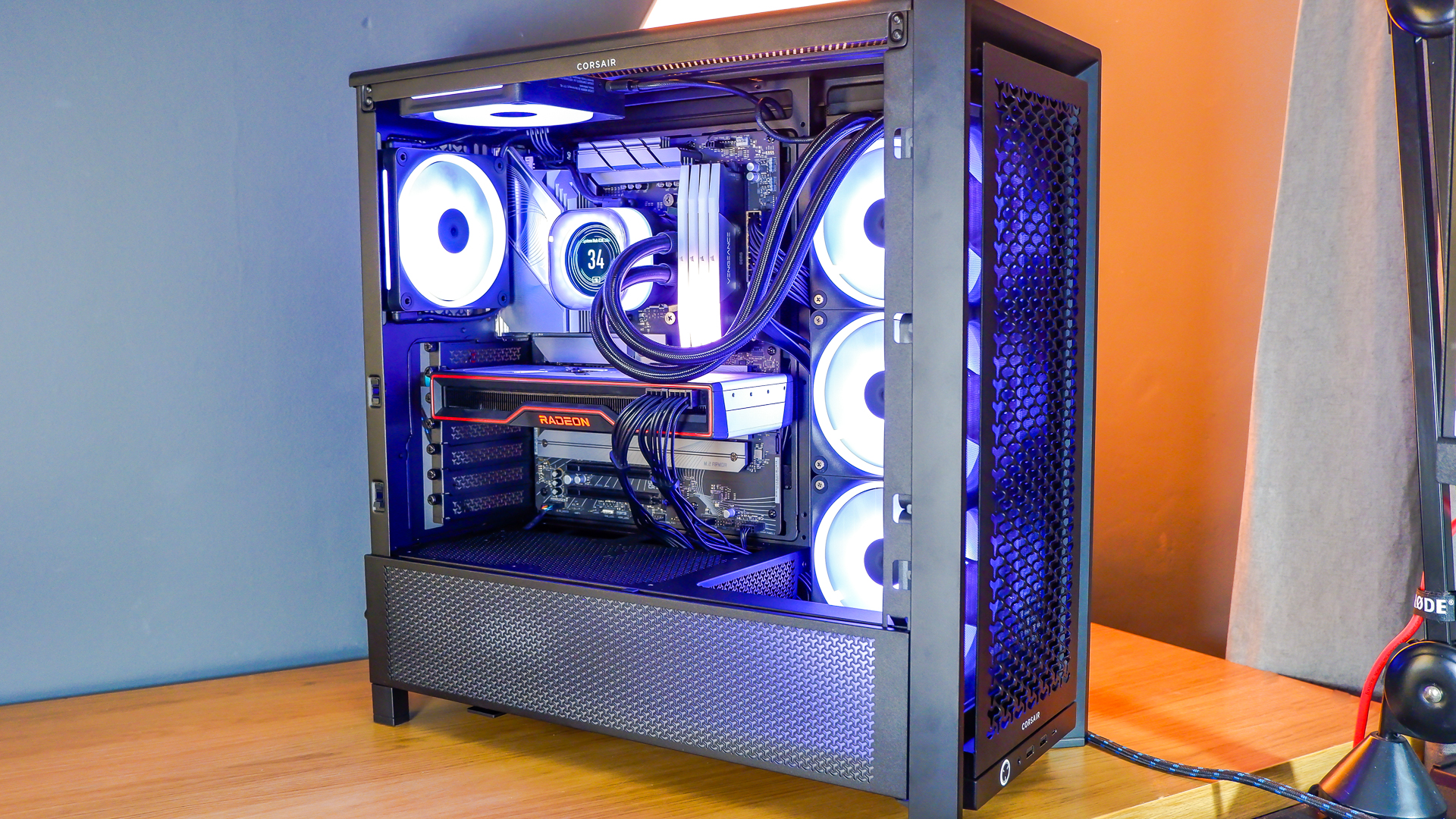
I set out to give iCUE Link a try with my latest PC build. This is a system of PC components that operate using shared connectors and hubs to allow for unified lighting, simple monitoring, and easy expansion. All of which sounds great to me after building many gaming PCs 'the old-fashioned way' over the past year.
It's a noble goal: cut the cable mess, simplify monitoring and control to a single application, and have your PC function as one unified machine. If you've struggled with cable runs or the multiple apps often required to run a gaming PC nowadays are getting you down, the iCUE is sure to appeal. Though it's not a complete homerun, and in fact I found myself more frustrated with it as a system in some ways than more traditional set-ups, but I'll get to that.
For the complete iCUE experience, I've opted for the full selection of components under the Corsair banner: liquid cooler, fans, power supply, RAM, and case. Then, for the rest of the build, a powerful all-AMD system, powered by a Ryzen 7 9700X and Radeon RX 9070 XT.
Component | Model | US Price | UK Price |
|---|---|---|---|
CPU | AMD Ryzen 7 9700X | ||
GPU | XFX Mercury AMD Radeon RX 9070 XT Gaming Edition with RGB | ||
Chassis | Corsair Frame 4000D | ||
Motherboard | ASRock B850 LiveMixer WiFi | ||
Memory | Corsair Vengeance 32 GB DDR5-6000 with Light Enhancement Kit | ||
SSD | Kingston Fury Renegade 1 TB | ||
CPU Cooler | Corsair iCUE Link Titan 360 RX LCD | ||
Cooling | Corsair LX120-R RGB and LX120 RGB | $342 (9 fans total) | £327 (9 fans total) |
Power Supply | Corsair RM850x | ||
| Row 9 - Cell 0 | Row 9 - Cell 1 | $2,444 | £2,058 |
As a system of connecting multiple components, iCUE Link makes the most sense. It all boils down to one connector: a wide, flat unit that's proprietary to Corsair's system. The fans also operate using the same connector, which means everything from liquid coolers to fans can be hooked up with the same basic cables.
There are a few options for cables: long ones (650 mm), short ones (200 mm), those with two right-angled connectors, and those with just one. You won't be short of cables in my experience, as a pack of three iCUE Link LX120 RGB fans comes with two cables, one long and one short, and an iCUE Link Hub.
The iCUE Link hub is the other important bit. This component alone costs $60. I ended up with three spare from all the Corsair components I used in this build, which is a lot of money's worth when you add them all together—all boxed up, unused, and unlikely to ever be used. I installed just one for this entire PC build, as one System Hub can link up to 24 devices. Even with a liquid cooler and a Frame 4000D filled with the latest iCUE fans, I wasn't anywhere close to reaching the maximum number of devices on a single controller.

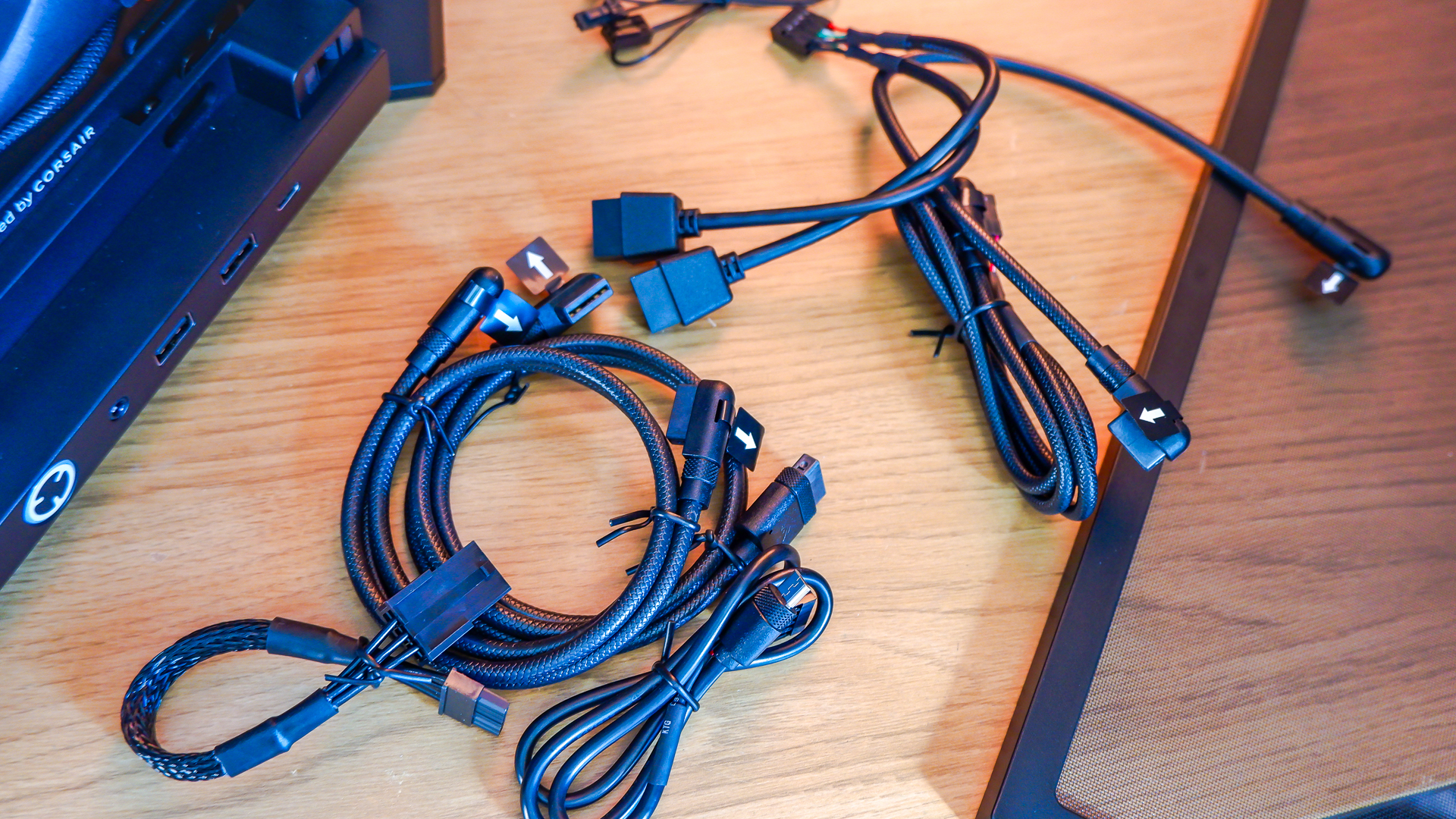
The other reason I'm unlikely to use another System Hub is that I quite literally couldn't, even if I wanted to. The brand new Corsair power supply I used in this build, the Corsair RM850X, only has three PCIe 8-pin cables in the box—which already left me one short for this build on account of the Radeon RX 9070 XT—and I had to grab a spare cable from another Corsair PSU to use the fourth, and final, PCIe power connector on the power supply.
Keep up to date with the most important stories and the best deals, as picked by the PC Gamer team.
Each System Hub has two iCUE Link connections, a power connector, a USB input, and a tach output, which is essentially a CPU fan header cable with a few wires missing to get your PC past the BIOS screen without flagging a fan speed error. Once connected, the hub sits in a spiderweb of cables—some big, some small, and some with bulky adapters—which it is now my responsibility to sort out. Luckily, the Frame 4000D has two specialised spots for the System Hub to sit within: one on the rear of the motherboard tray and another in front of the power supply shroud, which is remarkably thin on the 4000D and doesn't quite contain the cables within.
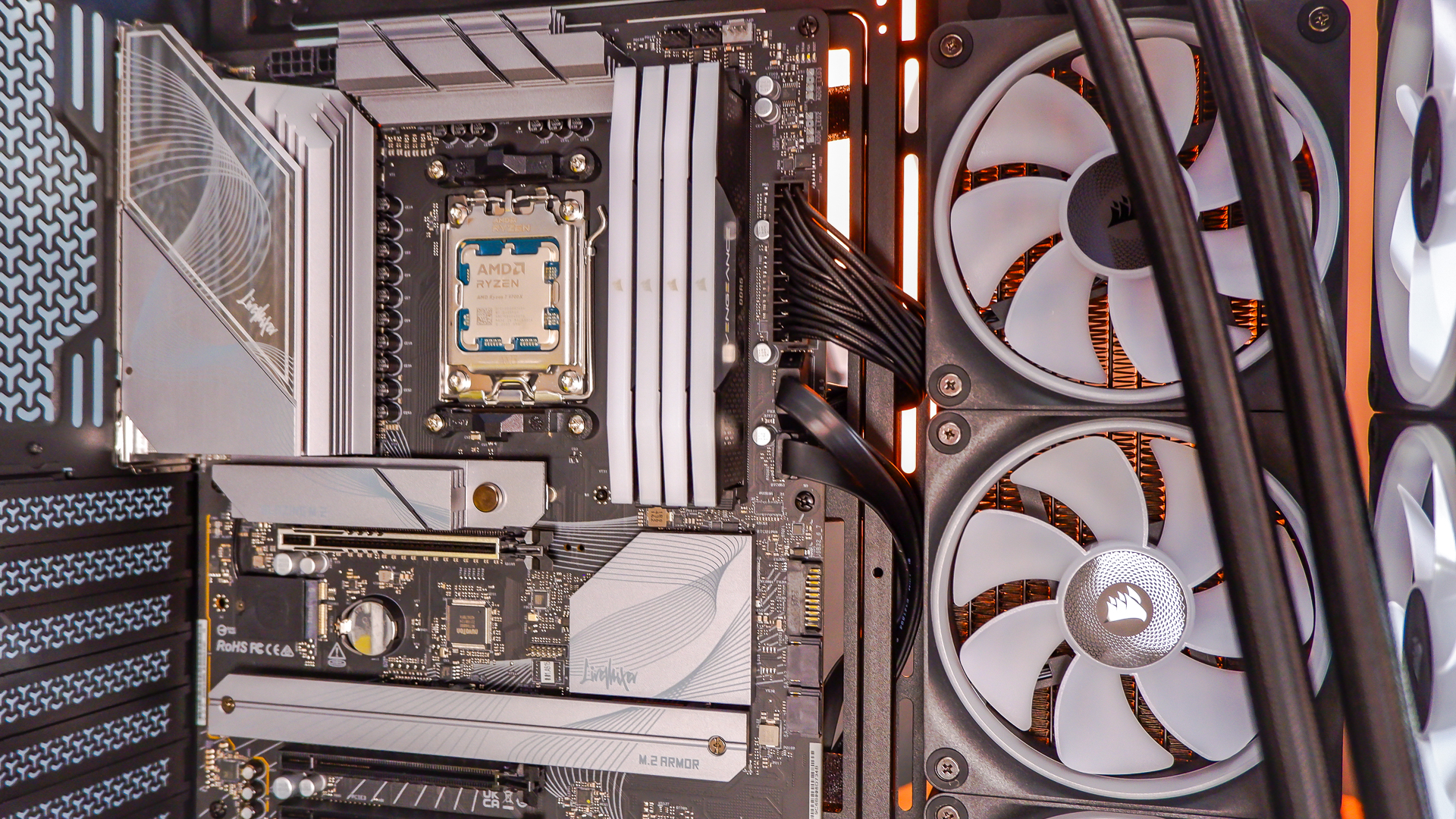
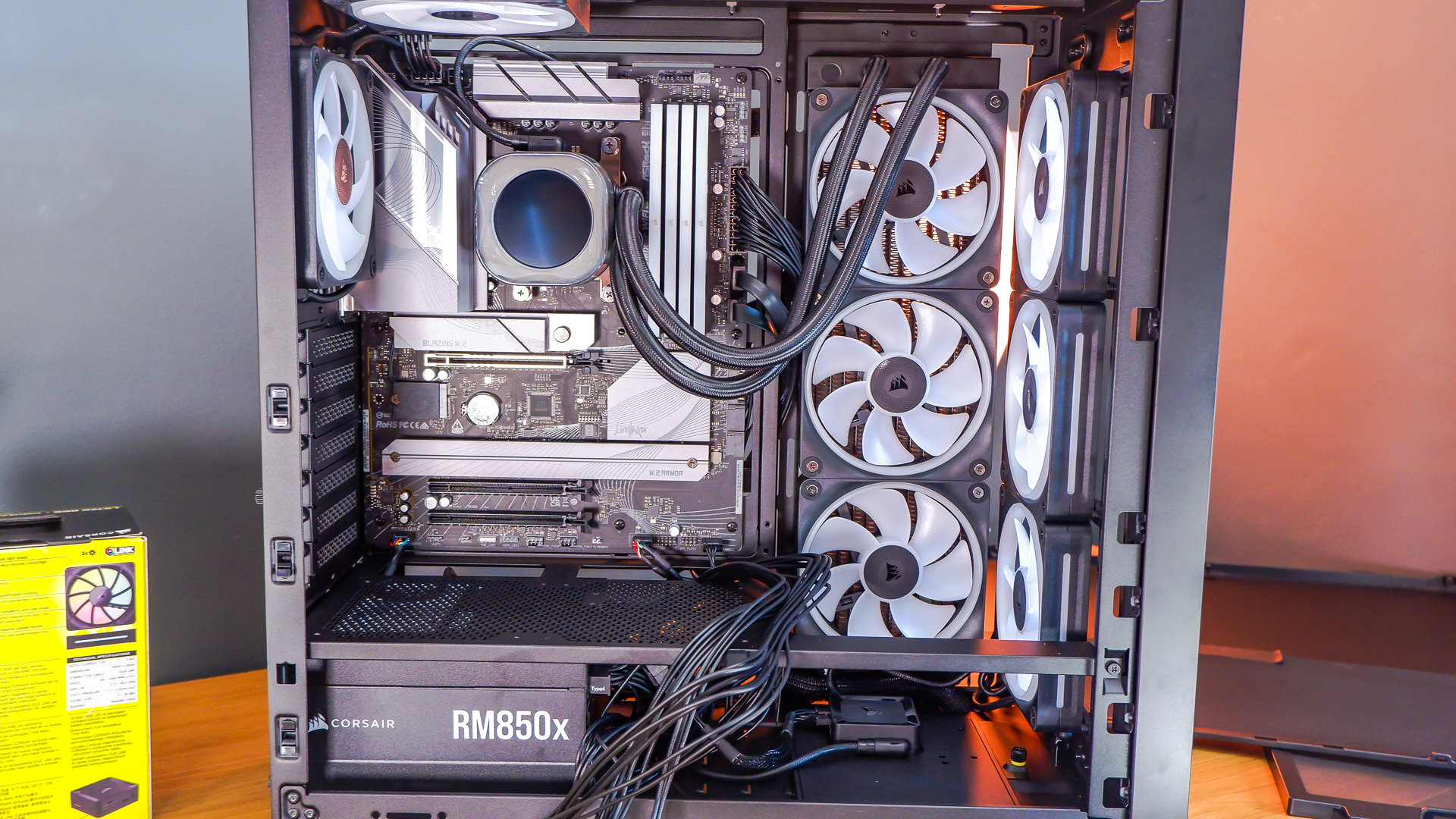
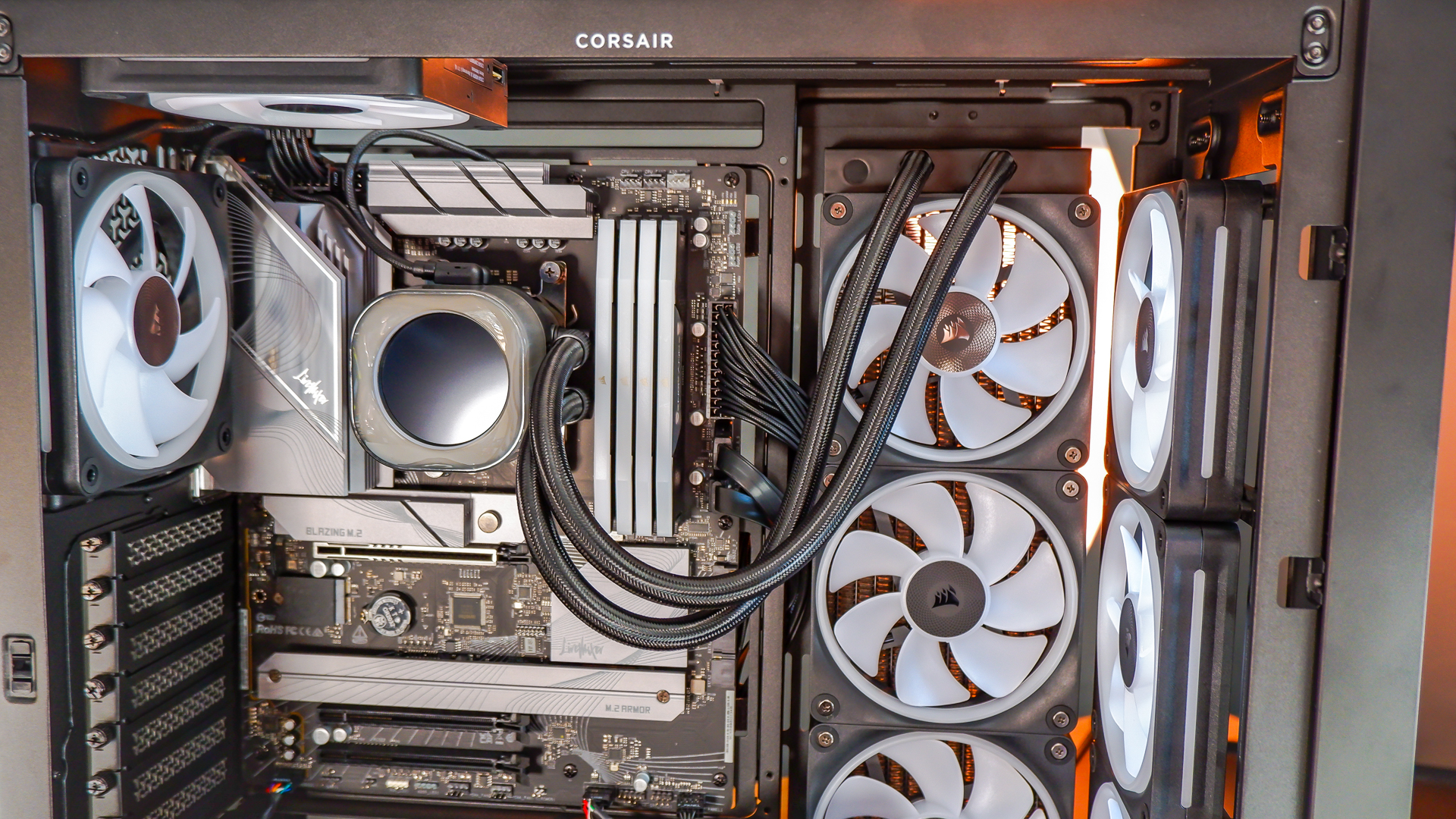
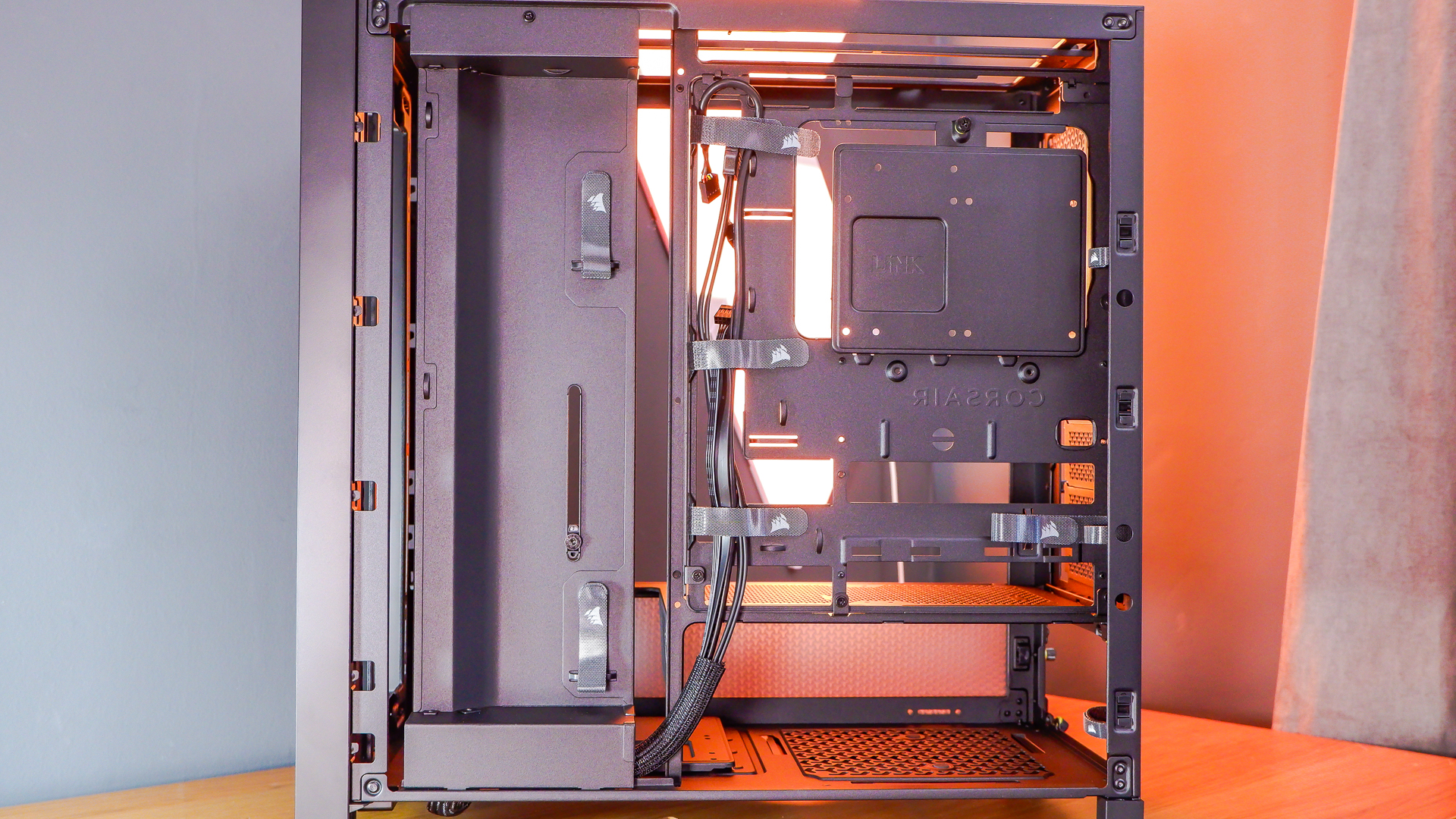
The theory is that by using one System Hub with a single connector, linking multiple and varied components, is that you're free to hook them up as you see fit in series. Effectively, two independent cable runs are possible from a single hub, though you can make do with just one. For my build, it works like this:
- The System Hub connects to the first fan on the radiator via a short cable run;
- the three fans on the radiator are connected together by intermediary connectors, without cables;
- the top fan is connected to the liquid cooler via a long cable;
- the liquid cooler is connected to the rear exhaust fan via a long cable;
- the rear exhaust fan is connected to the second rear exhaust fan via a short cable;
- and the three front fans are connected via a long cable to the System Hub independently.
Got all that? It's possible to connect the pieces together in various ways, depending on the size, shape, and configuration of any given case. Though most, I imagine, will opt for a similar run to mine.
It's certainly a different way to connect your components together. The natural benefit here is that, should you wish to replace a fan, cooler, or add a new component, you needn't scrap the entire cable run. It's a simple swap. Or if you do add something new into the loop, you just find the nearest component, switch the cables over, then run a new cable back to complete the loop to the next device in the chain.
It's a paradigm shift for PC building, though not an entirely easier one. For starters, the System Hub can swiftly become a mess, and there aren't often enough cable mounting points to manage it all—the downside of a compact hub that spills cables forth from three out of four of its sides. Then there's the gauge of the iCUE Link cables.
These are thick compared to your average PWM fan or ARGB cable, and they are tougher to route through smaller gaps or around motherboard components, which does make hiding them a little trickier. If this was the be-all and end-all for the cables required for these components, that'd be workable, but my frustrations certainly grew when I also had to route a USB 2.0 cable and fan header cable from the Corsair iCUE Link Titan 360 RX LCD to get that up and running.
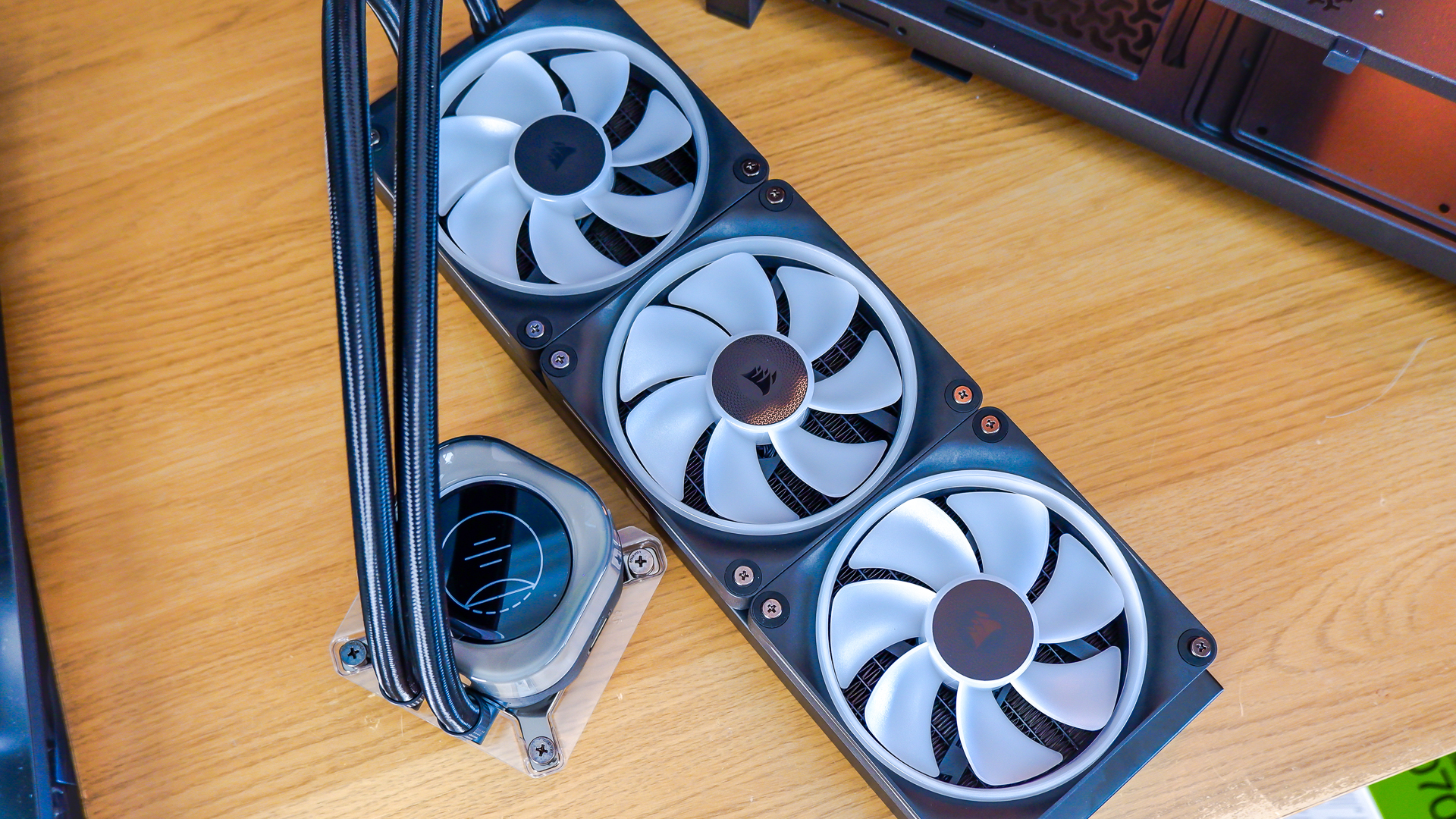
So, you're maybe saving a handful of cables with iCUE Link, but not all. One improvement would be to have the System Hub designed more gracefully to manage the cable mess, slim the cables down, or just shift the System Hub somewhere else entirely. On that last one, Corsair has already announced plans to integrate a System Hub into its power supplies—a move that could cut out my biggest peeves with the entire system.
Though if you are thinking of using iCUE Link with other non-iCUE Link components, I would pay close attention to the number of USB and PCIe power connections you might require. Many motherboards and power supplies will struggle to cater to the number of connections required for this and another system in tandem. I was certainly maxed out for both on the RM850x and ASRock B850 LiveMixer WiFi with Corsair's components alone.
With everything connected together and the PC together at last, it's relatively easy to control the entire system through Corsair iCUE. I say relatively, as I don't love the layout of iCUE for navigation, but lighting is easy to set up across all devices in the system. That includes the Corsair Vengeance RAM in this particular system, and I'm able to adjust fan curves easily since all the fans in this system are the same.
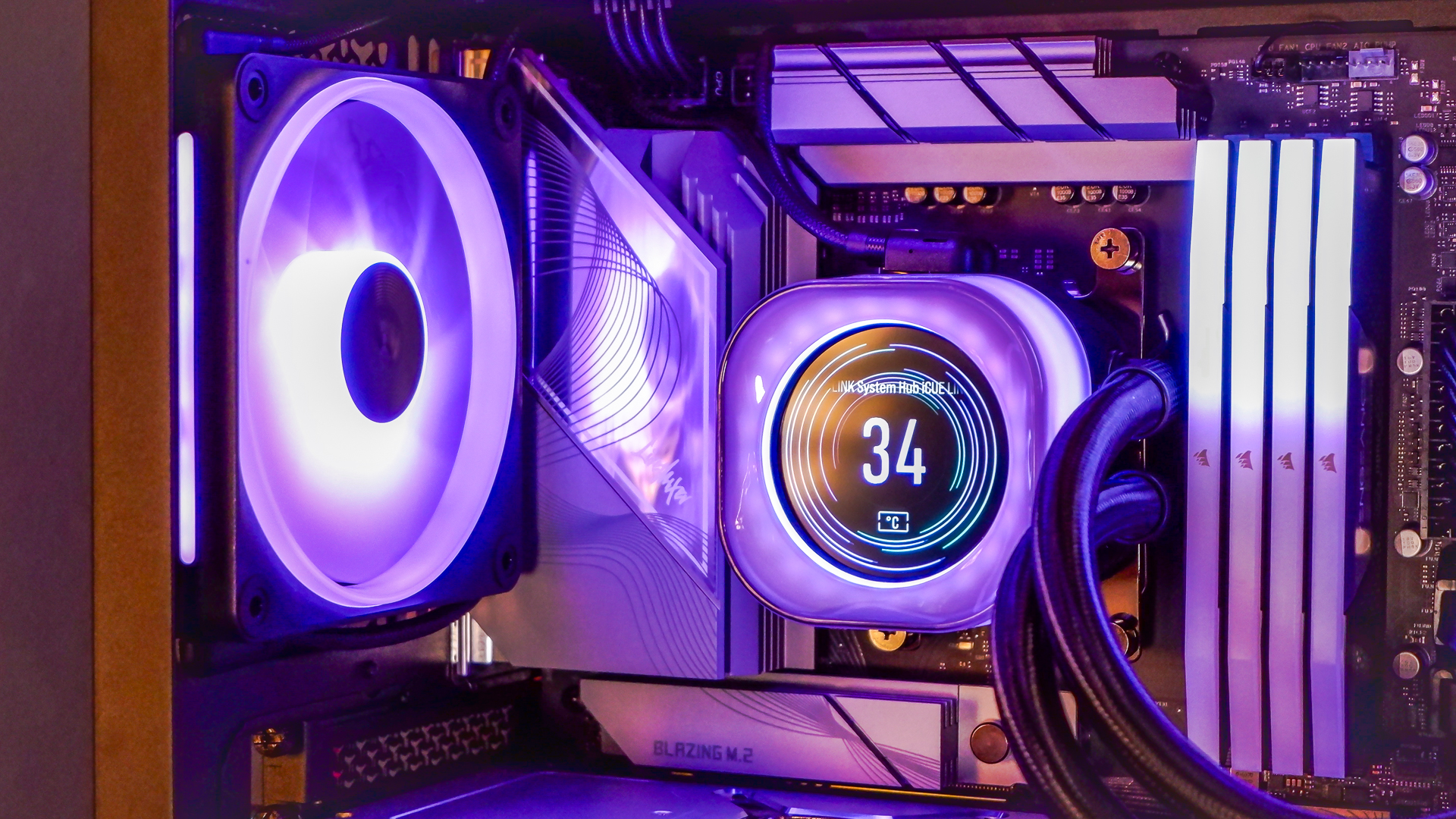
Oh, and speaking of RAM, these dummy sticks from Corsair are a pretty neat way to get the four-stick look without actually using four sticks and risking instability or poor OC speeds.
In terms of performance, this machine outperformed Zak's similarly rated RX 9070 XT/Core Ultra 265K Tron build from last month—not that it was a contest or anything—and with temperatures more or less in the same range for the entire system. The Zen 5 chip in this build edges ahead of the Core Ultra in Zak's single-core benchmarks, which helps it lead in games that favour CPU performance, such as Baldur's Gate 3. Though the Intel chip does take the lead in multi-core performance, which checks out when you look at core and thread counts between the 265K and 9700X: 20/20 to 8/16.
| Header Cell - Column 0 | Avg | Min (1% Low) |
|---|---|---|
Avatar: Frontiers of Pandora | 79 | 32 |
Cyberpunk 2077 | 68 | 56 |
Baldur's Gate 3 | 106 | 67 |
Black Myth: Wukong benchmark tool | 57 | 45 |
Metro Exodus Enhanced Edition | 122 | 46 |
3DMark Time Spy Extreme: 12261 (overall score)
Cinebench 2024: 134 (ST) | 1119 (MT)
7zip 24.07: 120 (compression) | 124 (decompression)
Handbrake: 77 fps
Max temps: 75°C (CPU) | 54°C (GPU) | 41°C (SSD)
Then there's the price of the Corsair iCUE Link system. I spent over $500 on cooling here, which is a significant investment in, effectively, aesthetics and ease of use. You can buy much more affordable fans and receive top performance—check out my guide to the best PC fans for more options.
There are other alternative options worth a look for the entire rig, too: I recently built a gaming PC for the latest PC gaming show, nicknamed The Rig, and I opted for Phanteks' very affordable M25 Gen2 fans throughout that build. These are incredibly affordable, look great, and they can be daisy-chained together to save on cable management.
After building both the Corsair iCUE system and the Phanteks system, I prefer the Phanteks. I didn't really mind the little bit of cable management I had to do to tidy up the back panel. But then I quite like cable management—if you don't, iCUE Link is a smart system, so long as you're aware it's far from clutter-free.
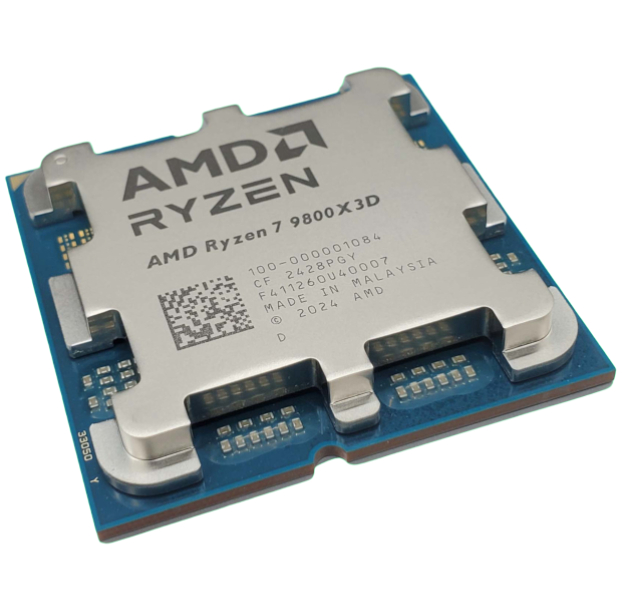
👉Check out our list of guides👈
1. Best CPU: AMD Ryzen 7 9800X3D
2. Best motherboard: MSI MAG X870 Tomahawk WiFi
3. Best RAM: G.Skill Trident Z5 RGB 32 GB DDR5-7200
4. Best SSD: WD_Black SN7100
5. Best graphics card: RTX 5070 Ti or RX 9070 XT (whichever is cheaper)

Jacob earned his first byline writing for his own tech blog, before graduating into breaking things professionally at PCGamesN. Now he's managing editor of the hardware team at PC Gamer, and you'll usually find him testing the latest components or building a gaming PC.
You must confirm your public display name before commenting
Please logout and then login again, you will then be prompted to enter your display name.
